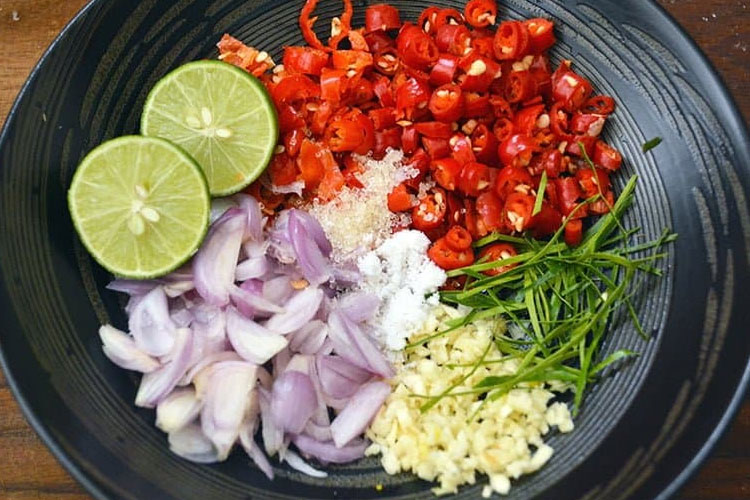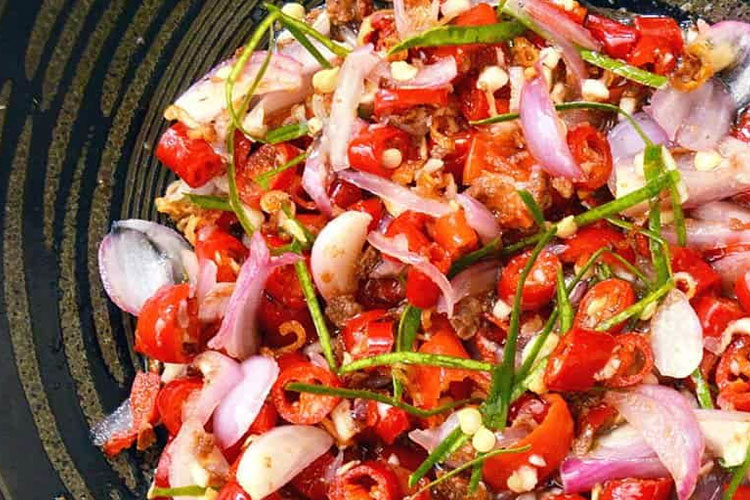TIMES MALAYSIA, JAKARTA – When it comes to Indonesian cuisine, sambal is an essential component that adds spice and flavor to a variety of dishes. Among the many types of sambal, Sambal Matah stands out as a unique and refreshing variant from the island of Bali.
Often referred to as the Balinese salsa, this raw sambal is known for its vibrant colors, bold flavors, and aromatic ingredients. he taste will elevate your palate. You could adjust the spiciness level to your taste.
The Origins of Sambal Matah

Sambal Matah originates from Bali, an island famous not only for its stunning landscapes but also for its rich culinary heritage. The word matah means raw in Balinese, which reflects the way this sambal is prepared—using fresh, uncooked ingredients that are simply mixed together to create a burst of flavors.
Unlike other sambals that require cooking, Sambal Matah maintains the natural freshness of its ingredients. "Sambal Matah is the essence of our island’s flavors, combining spice, freshness, and aroma in one bite," Ketut Arya, a local Balinese guuy said.
According to Indonesian Culinary Heritage: The Taste of Bali by Nyoman Sueta, Sambal Matah is a staple in Balinese households and an essential accompaniment to many traditional dishes.
Key Ingredients
The beauty of Sambal Matah lies in its simplicity and the harmony of its ingredients. The main components include:
- Shallots: Thinly sliced shallots provide a mild sweetness and a slight crunch.
- Garlic: Adds depth and aroma to the sambal.
- Lemongrass: Finely chopped lemongrass gives a citrusy fragrance.
- Bird’s Eye Chili (Cabe Rawit): The source of heat, giving Sambal Matah its signature spiciness.
- Kaffir Lime Leaves: Enhances the sambal with a fresh and zesty flavor.
- Lime Juice: Balances the heat with a tangy kick.
- Salt and Sugar: Essential seasonings to bring out the flavors.
- Coconut Oil: Lightly heated coconut oil helps blend the flavors together.
How to Make Sambal Matah
Making Sambal Matah is simple and requires minimal effort:
- Finely chop the shallots, garlic, lemongrass, chili, and kaffir lime leaves.
- Combine all the ingredients in a bowl.
- Heat a small amount of coconut oil and pour it over the mixture to slightly wilt the shallots and lemongrass, enhancing their aroma.
- Add lime juice, salt, and sugar to taste, then mix well.
- Serve fresh as a condiment to grilled fish, chicken, rice, or even tofu and tempeh.
The Versatility of Sambal Matah
Sambal Matah pairs exceptionally well with many dishes. Traditionally, it complements Balinese grilled seafood and meats, but its vibrant taste makes it a great addition to fusion dishes.
Some creative ways to enjoy Sambal Matah include as a topping for grilled meats and seafood or mixed into rice or noodles for an extra kick. Some people will tend to make it as a dip for crackers or fresh vegetables, or incorporated into tacos or wraps for a unique twist.
"The moment you taste Sambal Matah, it transports you straight to the beaches of Bali—fresh, spicy, and full of life," Ketut added.
Sambal Matah is more than just a spicy condiment; it is a representation of Balinese culinary artistry. Its fresh, aromatic, and zesty flavors make it a favorite among spice lovers and food enthusiasts. Whether you’re enjoying a traditional Balinese dish or experimenting with new recipes, it is a versatile and exciting addition that brings the taste of Bali to your plate. (*)
Artikel ini sebelumnya sudah tayang di TIMES Indonesia dengan judul: Sambal Matah: Outstanding Balinese Salsa
| Writer | : Khodijah Siti |
| Editor | : Khodijah Siti |




















![[CEK FAKTA] Cristiano Ronaldo Disebut Mendarat di Indonesia, Benarkah?](https://cdn-1.timesmedia.co.id/images/2025/02/19/cek-fakta.th.jpg)




